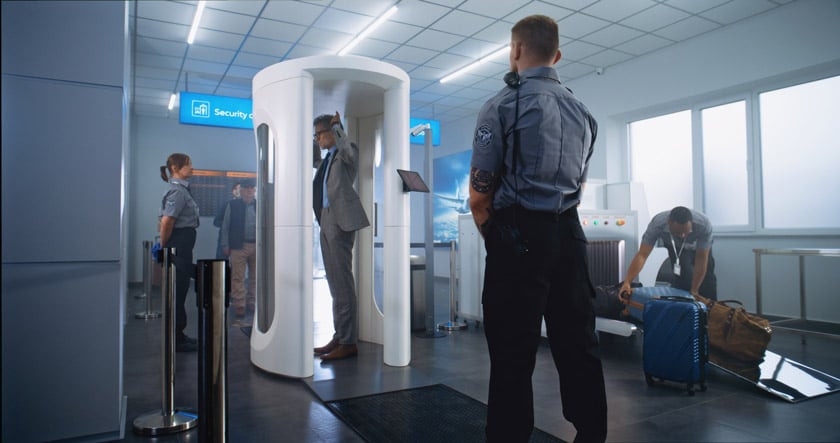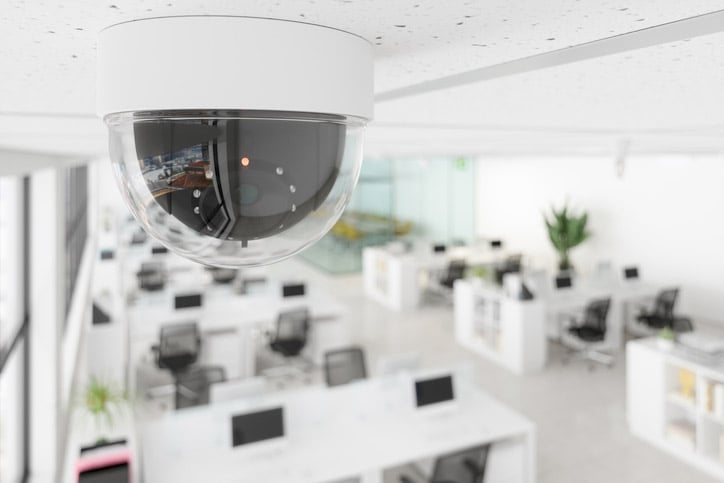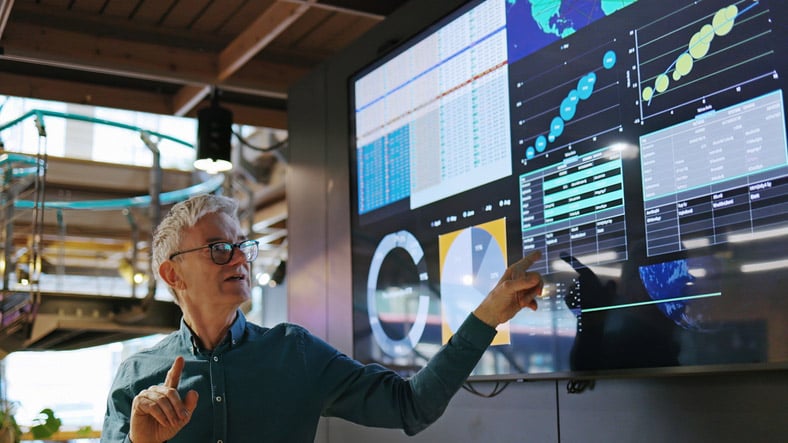Aviation Security Screening: Protecting Australia’s Airports and Travelling Public
Airports are among Australia’s most important pieces of critical infrastructure, and aviation security screening is one of the most visible and essential safeguards protecting the travelling public. Every day, aviation security screening officers prevent prohibited items from entering secure areas and aircraft cabins, helping to maintain national security, aviation safety and public confidence in air travel.
Aviation security is a shared responsibility involving the Australian Federal Police, aviation security screeners and airport security guards. Screening officers are often the first security professionals travellers encounter, combining regulated procedures, careful judgement and strong communication to maintain a safe and efficient checkpoint environment.
This article explores the role of aviation security screening officers, the technologies they use and how these functions support a secure and efficient airport experience across Australia’s aviation system.
The Role of Aviation Security Screeners
Aviation screening staff work in a controlled, highly regulated environment where precision and consistency underpin every task. Their work includes screening passengers and cabin baggage, interpreting imaging equipment, resolving alarms and helping travellers understand the screening process.
The role suits people who can maintain focus in a fast-paced environment while communicating clearly and respectfully with travellers from all backgrounds. Screeners assist experienced flyers, first-time travellers, families with children and individuals with accessibility or medical needs. A calm, confident approach ensures both safety and a smoother flow through the checkpoint.
Unlike security roles that involve patrolling or incident response, checkpoint screening is preventive by design. It centres on detection, assessment and maintaining the integrity of secure areas. Screeners collaborate closely with airport security guards and law enforcement to uphold safety throughout the airport precinct.
Airport Security Zones
Australian airports are divided into zones that help protect aircraft, passengers and operational areas:
- Landside areas are open to the public and include check-in, arrivals, retail areas and drop-off zones.
- Airside zones are restricted operational areas requiring proper authorisation and controlled access.
- The sterile area sits beyond the screening checkpoint and is reserved for screened passengers and authorised staff.
Screening officers maintain the separation between these zones by ensuring only appropriately screened or cleared individuals enter secure spaces. This supports aviation safety and reduces the risk of prohibited items reaching aircraft cabins.

Technology at the Checkpoint
Modern airport security screening relies on advanced equipment that supports both accurate detection and efficient passenger flow.
- X-ray screening remains a core system for examining cabin baggage. These machines produce two-dimensional images that highlight irregularities or items requiring further inspection. Because conventional x-ray systems cannot always penetrate electronics clearly, laptops and similar devices must be removed from bags for separate screening.
- 3D computed tomography (CT) systems represent a major enhancement in aviation security screening technology. CT scanners generate detailed, rotatable three-dimensional images, improving detection accuracy and reducing the need for manual bag searches. Travellers can generally keep laptops and most electronics inside their bags, reducing congestion at checkpoints.
- Body scanners using millimetre-wave technology are now standard across major terminals. Automated threat detection identifies areas requiring further assessment without displaying detailed body imagery, strengthening both accuracy and privacy.
- Other tools - such as explosive trace detection units, metal detectors, CCTV and integrated communications systems - form part of a layered approach to airport security.
Checkpoint Upgrades Across Australia
Airports throughout Australia have upgraded screening lanes with CT scanners, next-generation body scanners and improved baggage handling systems. These enhancements reflect global best practice and support more consistent security outcomes.
The upgrades provide clearer imaging, faster processing and fewer manual searches, contributing to smoother passenger movement. As technology advances, screening officers require ongoing training and strong technical aptitude to interpret more sophisticated imaging systems confidently.
These improvements to screening equipment complement broader efforts to strengthen the screening workforce itself.
Serving All Travellers
Effective airport security screening accommodates the needs of a diverse travelling public. Most travellers undergo a standard process involving body scanners or metal detectors, along with x-ray or CT screening of cabin baggage.
When an alarm requires further clarification, secondary screening techniques – such as metal detection, explosive trace testing or brief inspections of belongings – may be used. Alternate screening pathways are available for people with disabilities, mobility aids or medical implants who cannot complete the standard process. Clear communication and respectful adjustments ensure that security requirements are met while supporting each traveller’s individual needs.
Packing for Air Travel
Passenger preparation plays a major role in both aviation safety and the efficiency of screening operations. Understanding what you can take through airport security, what must be checked and what is considered a prohibited item helps prevent delays and reduces the need for manual inspections.
Some objects that seem harmless at ground level can behave differently in flight. Changes in air pressure, temperature and vibration can affect the stability of certain devices or substances. Lithium battery packs, aerosols and chemical-based items may overheat, leak or malfunction under these conditions, posing risks that travellers may not anticipate.
Airline and aviation security rules help manage these risks. Packing correctly supports the safety of passengers, cabin crew and aircraft while also contributing to a faster, more predictable checkpoint experience.

Beyond the Checkpoint
While many aviation screening officers work solely at the checkpoint, others perform broader duties that support airport-wide security operations. All screeners must hold an Aviation Security Identification Card (ASIC), which requires a comprehensive background check.
Roles that involve landside or airside patrols, incident response, access control or control room operations require a security licence in addition to an ASIC. These responsibilities complement checkpoint screening and support the wider airport security workforce. Coordination between screeners, airport security guards and the Australian Federal Police ensures a consistent, capable security presence across the airport environment.
The Screener Reform Project
In recent years, Australia has implemented a national reform program designed to strengthen the capability and professionalism of the aviation screening workforce. The screener reform project introduced consistent entry-level training, structured on-the-job learning and independent certification requirements for new screeners.
All screening officers now undertake annual certification to ensure their skills remain current and detection standards remain high. These reforms align Australia’s aviation security screening standards with leading international benchmarks and have significantly improved the consistency and capability of the airport security workforce.
Who Suits a Career in Aviation Screening?
Aviation screening roles appeal to people who value structure, teamwork and public safety. The work requires strong attention to detail, steady concentration and the ability to assess information quickly. Clear communication and a professional, reassuring manner help maintain both safety and a positive experience for travellers.
People who enjoy working with imaging technology, problem-solving and supporting the protection of critical infrastructure often find this career rewarding. Opportunities exist for progression into supervisory roles, training and assessment, compliance functions, control room operations and airport patrols.

Pathways into the Industry
Together, these qualifications form a clear pathway into key roles across Australia’s airport security environment.
Conclusion
Aviation security screening is central to protecting Australia’s airports, airlines and the travelling public. Through the work of trained screening officers, advanced technology and a strong regulatory framework, prohibited items are prevented from entering secure areas or aircraft cabins each day.
As airports continue to evolve, maintaining a capable, well-trained aviation security workforce remains essential to safety, efficiency and public confidence. For those seeking to enter the sector, the Certificate II in Transport Security Protection and Certificate II in Security Operations provide a strong foundation for contributing to the resilience and safety of Australia’s aviation network.
Certis Aviation Program Lands Naveen His Dream Job
Naveen Henry always had an interest in aviation, but he spent years exploring different careers. He studied mechanical engineering and then worked in a variety of roles such as aircraft assembly, sales and service of high-end medical imaging devices, IT Application development, support & management and most recently as an IT Project Officer for an NSW agency.



